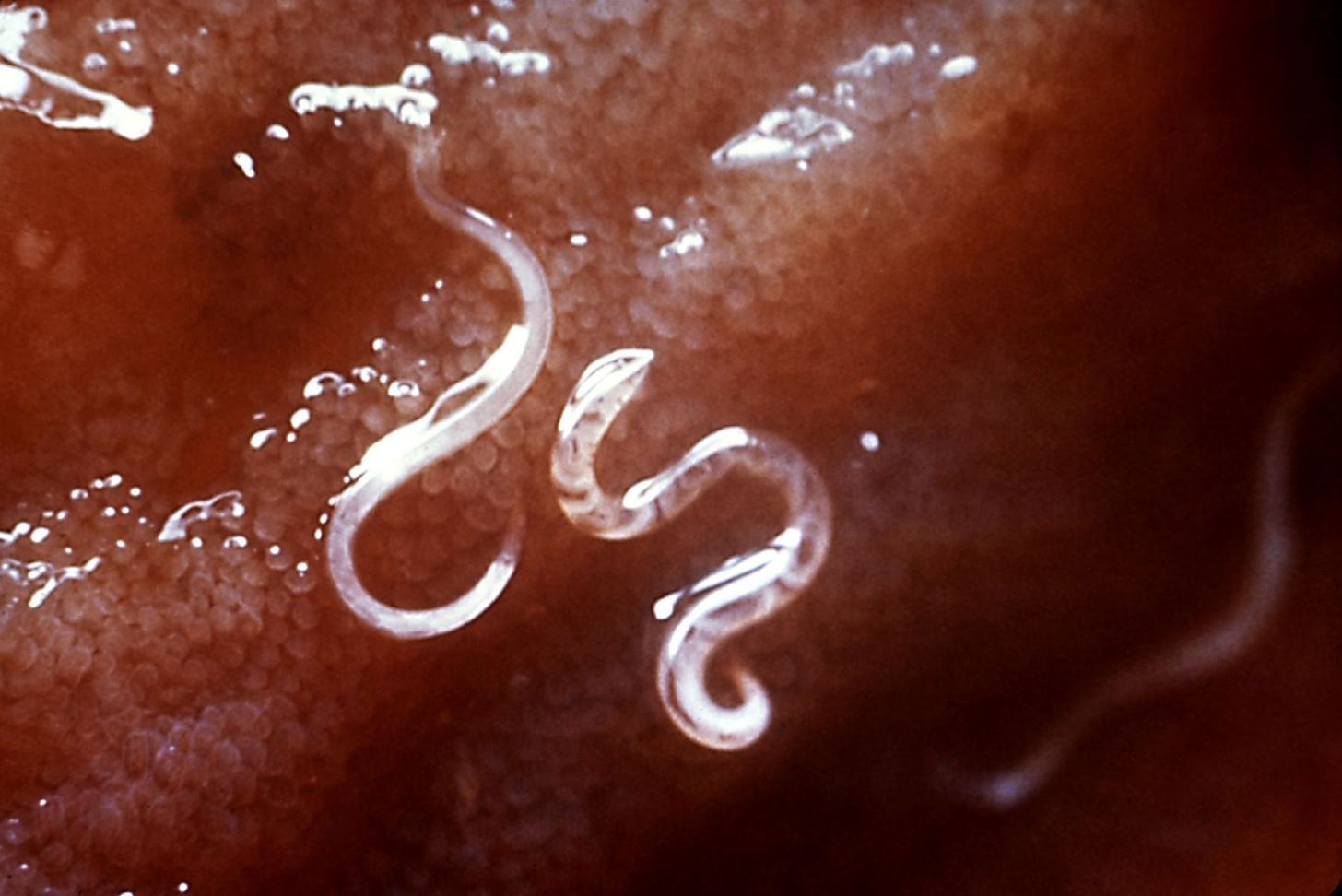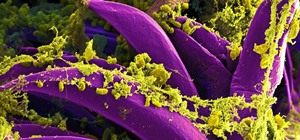If you live with pets, you know where their tongue has been, yet you let them kiss and lick you all they want without even thinking twice about it. I've heard people say that a dog's mouth is very clean, and that their saliva, delivered by licking, can help heal wounds, but is that really true?
Isn't it about time you knew how Lucy the licking longhair cat or Bruce the slobbering beagle might affect your health? News flash: It's not just animal mouths that pose a health hazard.
According to animal experts Peter Rabinowitz, Zimra Gordon, and Lynda Odofin, who wrote about pet-related infections in the journal American Family Physician, most human infections come from animals. So let's take a trip to the world of zoonotic infections—infections transmitted from animals to humans—and zoom in on these infectious gifts from your pets.
Let's Put the Wound-Licking Myth to Bed Right Now
The notion that dog saliva is sanitary isn't just an urban legend—researchers have been interested in the topic enough to conduct several scientific studies on it.
In 2011, researchers in Japan conducted a study that was published in the Archives of Oral Biology. The objective of the study was to analyze the periotondontitis-causing bacteria in dogs and their humans because, "a large number of individuals consider their companion animals as family members and have close contact with them in daily life."
Periodontitis is a serious gum disease. Bacteria in plaque can infect gums, causing gums to pull away from the teeth. These gaps allow bacteria to enter the tooth sockets and, eventually, the bloodstream.
And it's not just your teeth at stake. Periodontal disease has been implicated in the development of cardiovascular disease, diabetes, and other systemic illnesses.
The research team collected dental plaque on 66 dogs and 81 members of 64 families who came to a dog training school or animal clinic in Okayama, Japan. The samples were tested for bacteria that causes periodontal disease. The researchers found several types of bacteria in both the dog and human samples, but the bacteria was found in more dogs than humans.
Porphyromonas gulae was found in 71% of dogs and 16% of humans, Tannerella forsythia was found in 77% of the dogs and 31% of the human samples, and Campylobacter rectus was found in 67% of the dogs and 21% of the humans.
Yes, human mouths contained these periodontitis-causing bacteria, too, but they were far more abundant in the dogs' mouths. You probably visit the dentist and have your plaque removed periodically. Your dog probably doesn't, especially since pet dental work is extremely expensive. Even so, do you really need more of these bacteria? Keep your mouth away from their mouth!
While some people say that pet saliva is fine, since they lick their wounds to speed healing, veterinarian Patty Khuly, from Miami, Florida, explained that cones are put on pets with wounds for a reason—so they can't lick the wound.
She said licking does provide the immediate benefit of getting blood, dirt, and bacteria off a wound—and mammalian saliva, including human saliva, contains enzymes and factors designed to speed healing and reduce infection. But, it's not all good.
[B]ad oral bacteria [are] also abound, along with obsessive tendencies in pets. So the fact that licking can be helpful doesn't mean that their mouths are cleaner than ours.
Just ask the woman from the UK who ended up in the ICU after suffering confusion, headaches, diarrhea, high fever, kidney, and respiratory failure. The cause was traced to a blood infection with a rare bacteria, Capnocytophaga canimorsus found in the mouth of dogs and cats.
Because she showed no signs of bites or scratches, the doctors believe the bacteria was transmitted to the woman by a lick from her Italian greyhound. After antibiotic treatment, she eventually recovered.
Okay, So No Kissing—But That Doesn't Mean You're Safe
Several types of infections can be passed from cats and dogs to humans. Let's review the most common ones in cats and in dogs.
Bacterial Infections
Cat-scratch disease, also called bartonellosis, is the most common zoonotic disease in cats. Like the names implies, this bacteria is usually passed from cats to humans from a scratch. People get swollen lymph nodes around the head, neck, and upper limbs. They may also have a fever, headache, sore muscles and joints, fatigue, and poor appetite. Usually healthy people recover from cat-scratch disease on their own.
Salmonella bacteria can be passed from cats to humans, too. It causes diarrhea, fever, and stomach pain. Salmonellosis usually resolves on its own, but some people require medical attention if the diarrhea is severe. Salmonella infections are usually associated with eating undercooked chicken or contaminated eggs, but cats can pass salmonella in their stool. Cats can get infected with salmonella by eating wild birds and other animals.
Campylobacter can be spread through dog feces, so it presents a risk to people picking up dog droppings. Dogs infected with Campylobacter might show no signs of illness at all or have a slight fever or diarrhea, but it can make people very sick. Within 2-5 days after infection, people will have diarrhea, cramping, abdominal pain, and fever. Most people, however, recover on their own.
Parasitic infections
Dogs can pass tapeworms, hookworms, and roundworms to humans. Cats tend to pass hookworms and roundworms to people. Each worm is passed differently.
Dogs get tapeworm by eating infected fleas, and that is how people get the infection, too. Children are prone to this infection because they are more likely to ingest a flea, and small rice-like worm segments may be seen near their anus or in their bowel movements. The infection can be effectively treated with medication.
Dog and cat hookworms get deposited in the soil from feces. People become infected with hookworms when they sit or walk barefoot on contaminated soil. Hookworm larvae enter the top layers of skin and cause an itchy reaction. Symptoms usually resolve in 4-6 weeks without medical treatment.
Toxocara roundworms from dogs and cats can cause a parasitic disease in people. Dogs and people can become infected by accidentally swallowing roundworm eggs from the environment. Children are most often affected with roundworm because they are more apt to put items in their mouth.

Two forms of roundworm disease are found in people. The roundworm larvae can invade the retina of the eye and cause inflammation, scarring, and sometimes blindness. This is called ocular toxicarasis. Visceral larva migrans occurs when the larvae invade the liver, lung, or central nervous system.
Medication is prescribed to treat roundworm infections.
Fungal Infections
Cat ringworm infection sounds like it should be caused by a worm, but actually it's caused by a fungus.
Ringworm in cats looks like a dry, gray, scaly patch on the skin. In humans, ringworm looks like a round, red, itchy patch with a ring of scale around the edge.
Ringworm is transmitted by contact with the skin of an infected cat. Spores from a cat's ringworm infection drop into the environment and people can pick these up for many months. Children are particularly at risk of getting ringworm infections.
Protozoal Infections
Protozoans are single-celled organisms. The most dangerous protozoan passed from cats to humans is Toxoplasma gondii. The infection is particularly serious in people with weakened immune systems, including infants and pregnant women.
Cats can become infected by eating infected birds or rodents, or anything contaminated with feces from another infected cat. The parasite can be shed in the cat's feces for up to two weeks and is the source of human infections.
Toxoplamsa gondii has also (jokingly) been called "crazy cat lady syndrome" since it has shown to make infected mammals, like rats, less cautious of predators like cats (which then eat them). There isn't much hard proof that this kind of behavior manipulation is happening in humans, though.
Viral Infections
Most viruses only infect their natural host species, so catching a virus from your dog or cat is less likely than other types of infections. Rabies, however, is an exception. It can be passed from infected dogs, cats, and other animals to humans through a bite.
Rabies is a fatal neurologic disease in animals and humans. Animals with rabies often exhibit sudden, unusual behavior and progressive paralysis.
People infected with rabies may experience symptoms within days or months. The first symptoms may be weakness, fever, and headache. Symptoms can progress to confusion, anxiety, behavioral changes, and delirium within a few days. By the time symptoms appear, it is almost always too late for treatment.
In December 2016, the New York City Health Department released a report of a case of H7N2 influenza in a veterinarian. This was the first report of the flu being passed from a cat to a human. The report said the risk of cat-to-human flu transmission is low, but now we know it's possible.
We Aren't Giving Up Lucy & Bruce
That was a long list of zoonotic infections, but it probably wasn't enough to discourage anyone from owning a pet—and certainly not enough for us to consider giving up pet ownership.
When it comes to vices we love, our pets top the list. We are willing to kiss, sleep with, and snuggle our pets. And we certainly are going to weigh the risks of any infection we might catch from them against the multitude of benefits they give us.

So, let's get to the steps we need to take to help prevent zoonotic infections from our pets.
The most important step is to keep your hands clean. Wash hands with soap and clean, running water after handling cats, dogs, dog feces, or used kitty litter. If soap and water are unavailable, use an alcohol-based hand sanitizer that contains at least 60% alcohol.
A lot of the infections animals can get and pass on are contracted from contact with other, infected animals, or their feces—a good reason to keep your cats inside.
- To specifically prevent toxoplasmosis, wear gloves when handling kitty litter. Pregnant women should avoid handling kitty litter.
- Treat cats and dogs regularly with flea prevention medicine.
- Have any ill pet evaluated by a veterinarian.
- Have any cat or dog bite evaluated by a physician immediately.
- Confine cats infected with ringworm to one room until they are free of infection.
- Once a pet's infection has resolved, thoroughly clean and disinfect the household.
- Keep kids' sandboxes covered when not in use so cats don't think it's the biggest kitty litter box in the neighborhood.
- Keep your pets vaccinated against rabies.
- Love your pets. Enjoy their company.
Okay, that last step is not a way to prevent zoonotic infections, but it's certainly a way to lead a happier life with your furry friend.
Just updated your iPhone? You'll find new emoji, enhanced security, podcast transcripts, Apple Cash virtual numbers, and other useful features. There are even new additions hidden within Safari. Find out what's new and changed on your iPhone with the iOS 17.4 update.






























Be the First to Comment
Share Your Thoughts